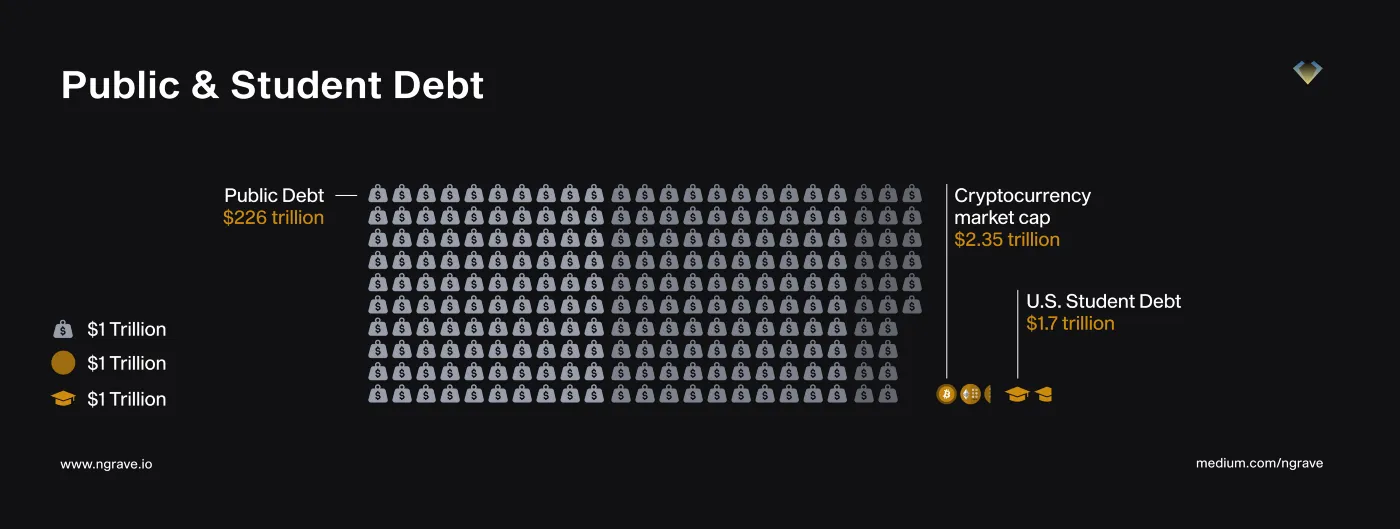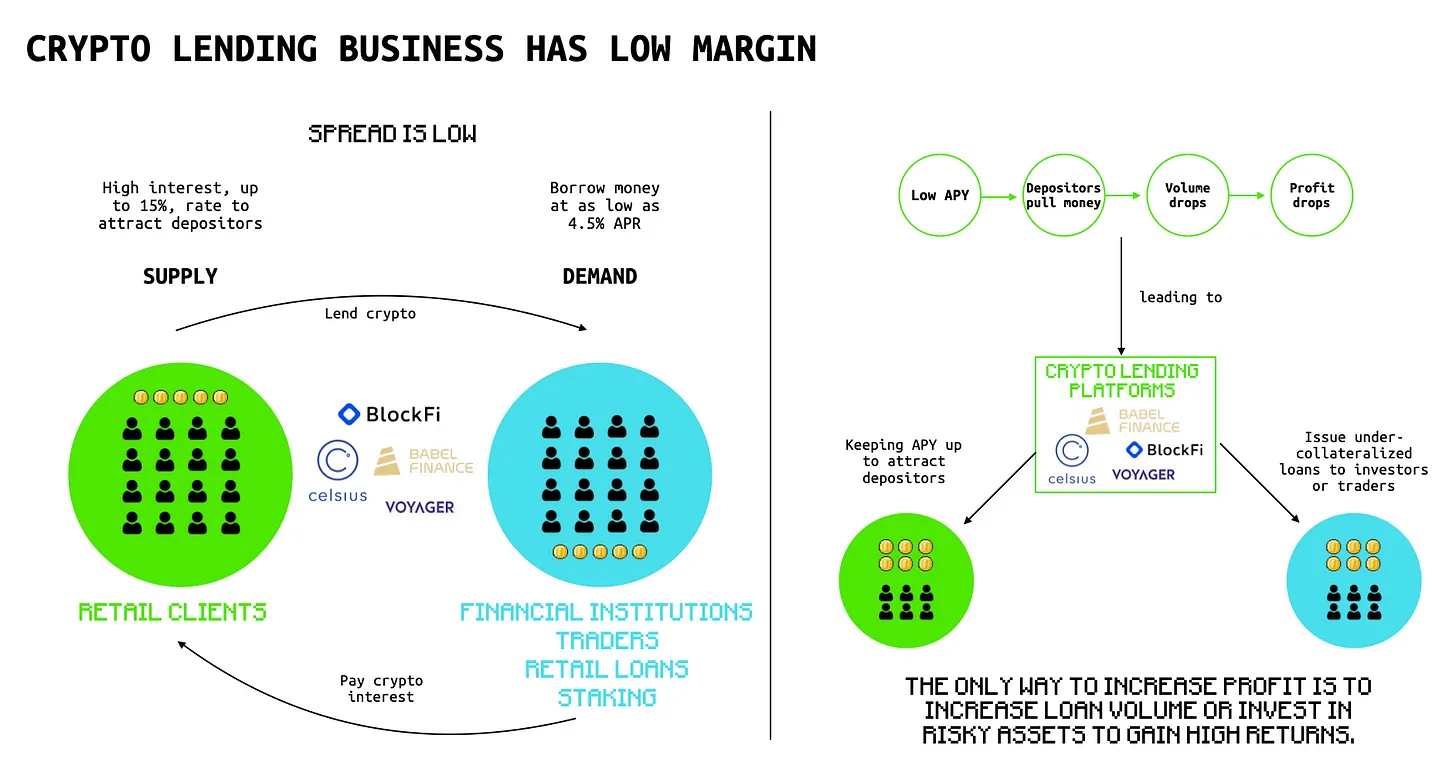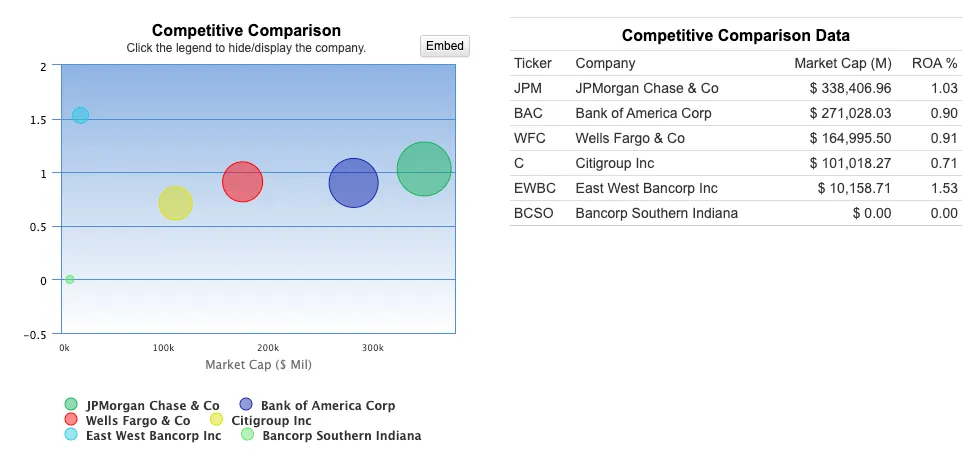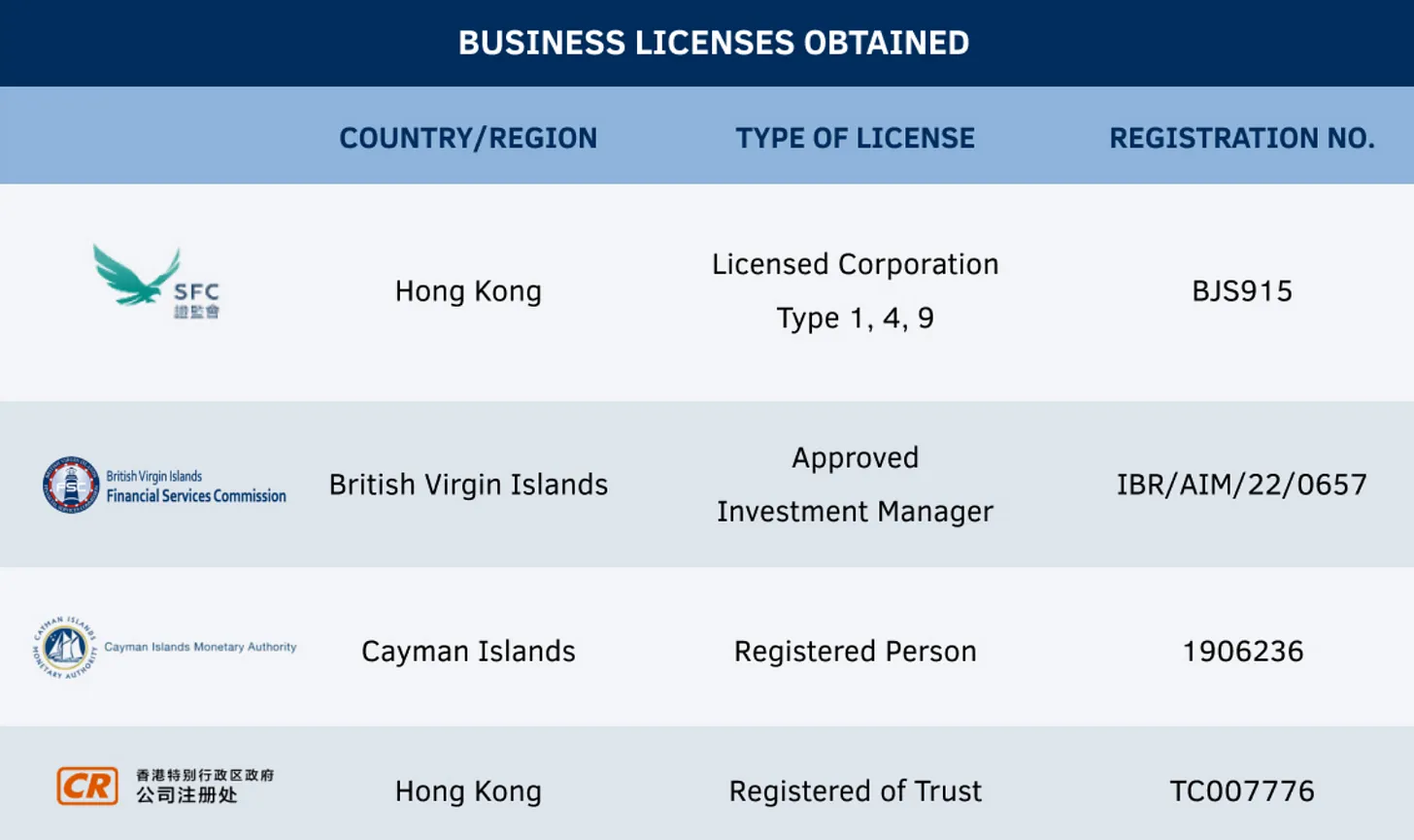The sharp decline of cryptocurrency prices destroyed many crypto asset management companies. However, the demand for asset management will not disappear: it will even keep growing as the crypto market continues to grow larger. We strongly believe that there are huge potential opportunities for existing companies to become great in the future.
1. Market Size
Digital assets are one of the fastest growing assets in the world in the last decade. According to CoinGecko, the market value of digital assets was only around $10 billion in 2014, but has grown to about $2.3 trillion at the beginning of 2022. That is an amazing 216x growth with a CAGR of approximately 96% throughout the last 8 years.

More and more individuals and institutions recognize that the rise of crypto assets is an unstoppable trend. According to VettaFi, since the first US Bitcoin ETF launched in October 2021, the total market value of the top 10 Bitcoin related ETFs in the US has grown to about $2.27 billion. Morgan Stanley became the first big US bank to offer its wealthy clients access to Bitcoin funds in March of 2021. Goldman Sachs offered its first Bitcoin backed lending facility in April of 2022. Many other big names are participating in the crypto industry in various ways as well.
Although the crypto market has increased significantly in the last decade, we have to say that it still has large growth potential. According to the data of January this year, the cryptocurrency market cap was $2.35 trillion while the gold market cap was $11.4 trillion, 4.85x of the crypto market cap.

The equity market cap is $122 trillion which is 52x of the crypto market cap.

The public debt market cap is $226 trillion which is 96x of the crypto market cap.

As of now, the Bitcoin still dominates 40.6% of the total crypto asset market, while its domination was 88% at the beginning of 2014. The proportion of Bitcoin’s dominance in the crypto markets will likely continue to decreasing in the long term, while many emerging crypto assets’ growth potential will unfold.
Even if only 5% of crypto assets come into the asset management company, it has to be a big financial industry.
2. Digital Asset Management Market Overview
Asset management is a very broad concept. Just like banks in traditional finance, digital asset management companies provide their customers with a variety of products and services.
2.1 Saving Account & Lending Service
Saving accounts are one of the most basic businesses of asset management companies. Similar to traditional banks, the clients deposit their digital assets into the saving account and earn interest. Mostly, the companies will lend these assets to generate earnings and make profits from the spread. However, the digital asset management (digital AM) business is quite different from traditional banking.
- Traditional banks usually offer services in one or a few currencies, while digital AM companies will support many different crypto assets.
- Traditional banks cannot access collateral before they default, while crypto lenders are able to lend collateral assets out again to make additional profit at any time.
- Borrowers of crypto assets are often limited to a handful of top institutions across the entire industry, which makes asset management revenue highly dependent on those few clients, which carries high risk.
- The transparent and highly volatile crypto market make it easy to trigger liquidation. Liquidation may hurt the both the clients and the company.
Most of the digital asset management companies provide these services. However, these characteristics bring the lenders not only more operational flexibility but also more risks. Recently, Babel, Voyager and BlockFi, which represent some of the most well-known crypto asset management services, face high liquidity risks, which, if unmanaged, may lead to widespread financial panic.

2.2 Market Making
Market making is an important and highly specialized service that asset management firms do not provide to ordinary clients, but it is very important and essential to the digital asset management industry.
When serving clients, asset management companies require support from digital asset exchanges such as the facility colocation and low fee rates. They also enjoy higher loan limits, resulting from the large amount of business they bring to the exchange. However, exchanges often provide support only in exchange for strong market making services. The larger volume and deeper depth the company can provide, the more support the exchange provides the company, and the better service the company can give its clients.
Jump Trading, GSR, Alameda Research and IDEG are big players in this area. IDEG is a fully regulated asset management company headquartered in Singapore. Its trading team established a professional high frequency trading system to provide liquidity in a variety of digital exchanges. In this case IDEG has the best fee rate and execution latency in most exchanges. With these facilities, the company is able to serve its clients better.
2.3 Trading Desk
The trading desk is a very common asset management service, too. Like the brokerage business in traditional finance, clients can buy or sell specified assets through the trading desk as they wish. The capabilities of the firm's trading team determine the types of services that they are able to provide. Most trading desks can only offer simple spot trading services., while others are able to provide multiple trading strategies including arbitrage, CTA, options strategies, etc.
Genesis Trading, Amber Group, OSL and IDEG did very well in trading business. Based on the strong in house high frequency trading system, IDEG has developed a variety of trading strategies to service the clients. Quantitative arbitrage strategies can give clients a product similar to fixed income products on not only USD but also BTC, ETH or other cryptocurrencies. Algorithmic trading strategies can help the clients buy or sell crypto assets at better prices. Finally, hedging strategies can cover specific risks for clients.
2.4 Custody
Custody is a very important service in the financial industry. It can efficiently eliminate the operating risk by bringing in one or more approvers. There are three types of custody services in the crypto industry:
- Ordinary custody, which is similar to traditional services, such as Bitgo, Copper, etc.
- Custody services of exchanges, which would be very useful when the underlying asset should be trading frequently in exchanges. Binance and Coinbase are supportive of it.
- Self-custody, which is more crypto native and usually used by DAOs and protocols. The clients use multi-party computation solutions to manage the assets. Fireblock and Gnosis safe can provide this service.
Asset management companies are the primary users of custody services, to ensure the digital assets are as safe as they could be. Custody should be adapted to the corresponding products, and only in this way can security be truly improved.
For example, when designing Trust products, IDEG chooses Binance and Coinbase as custodians in the exchange trading products while chooses Gnosis Safe as custodians for its DeFi farming products.
2.5 Trust
Asset management companies usually issue financial products to manage the assets for clients. Most financial products are issued in the form of funds in the crypto industry. However, some regulated companies can raise funds through Trust products. Trust products have multiple advantages:
- limited liability is possible if a corporate trustee is appointed
- The structure provides more privacy than a company
- There can be flexibility in distributions among beneficiaries
- Trust income is generally taxed as income of an individual.
Holding the Trust License in Hong Kong, IDEG is a fully regulated Trust company which can offer clients with a wide variety of Trust products. Its T-I-M-E-S series products have multiple active strategies and underlying assets. The IDEG team aims to create channels for different traditional investors to fully access the digital asset market.
Tracking
Tracking products actively track single digital assets and baskets of multi-digital assets with enhanced returns. In the single tracking product, the IDEG trading team will utilize the quantitative arbitrage strategy to enhance returns. The company will charge the carry based on the enhanced return instead of the total return, this is very beneficial to customers who are optimistic about the crypto market.
In the baskets product, the professional investment team of IDEG will choose the best underlying assets according to fundamental and market analyses. Additionally, the team will actively manage the position to enhance returns.
Interest
Interest products offer clients stable or fixed returns. Unlike many competing companies which pay interest through profit of their lending businesses, the IDEG interest products generate revenue from quantitative arbitrage trading, which is far less risky.
Mining
IDEG provides Bitcoin mining products which have high yield. Its sister company Atlas Technology has one of the largest Bitcoin mining businesses in the world. Through refined management, Atlas Technology is able to obtain a higher return than the industry average. This makes the mining products of IDEG very competitive.
Emerging
The crypto market is constantly at the cutting edge of technological development, and is very different to the traditional market. This requires cutting edge multi-dimensional risk strategies to adapt to the new innovations in the market and identify the many profitable opportunities that lay hidden. IDEG’s years of specialist research help clients in selecting protocols, determining timing for each unique case-by-case opportunity, including monitoring performance, rebalancing the strategy risk allocation, and hedging appropriate market and counter-party risks.
Structured
IDEG customizes products for diversified risk appetites. For example, Bitcoin miners’ revenue is strongly correlated with the price of Bitcoin which puts the miners at large risk. IDEG could use the derivatives structure to smooth the revenue of the miners and eliminate the risk.
3. Challenges of crypto asset management
The ultra high growth rate attracts a large number of speculators to the cryptocurrency market and lending services magnify the leverage rate of these speculators. The lack of credit systems in the crypto industry makes it easy for large institutions access loans from multiple lenders without disclosure of their positions and leverage ratio. Once the market goes down and someone’s liquidation is triggered, it creates a series of liquidation events and causes financial panic. Recently, Three Arrows Capital, Celsius, Voyager and Babel all suffered in severe liquidity crises, which seriously hurt both the clients and themselves.
The crypto lending business rallied significantly during the pandemic with retail investors speculating on everything and pushing prices upwards. From early 2020 to early 2022, users on the Voyager platform increased from 120,000 to 3.5 million.
3.1 Low Profit Margin
Same as the traditional banks, the profit margin of the saving and lending businesses are very low. According to Gurufocus, the ROA of most traditional banks is only around 1%. However, while the AUM of crypto asset management is relatively lower than banks, the fixed cost is the same. This makes most digital asset management companies unprofitable. Some of them have to take on more risk in search for additional profits.

3.2 Lack of Regulation
Unregulated underground credit is conducted on a large scale. Many CeFi (Centralized Finance) institutions engage in large-scale unsecured credit lending to each other. This is normal to some extent, similar to interbank lending in traditional finance, and is necessary for the optimal allocation of capital and risk among the various operating entities within the banking system. However, there is no regulated, transparent and supervised credit market in the crypto industry. Credit lending between CeFi is done in a shady, haphazard and unregulated way, without peer supervision or disclosure. We can only think of these credits as a set of underground transactions, so that the positive elements of the market mechanism do not work. For example, Three Arrows Capital, which at one time had $18 billion of assets, borrowed billions of dollars in unsecured credit from more than two dozen CeFi institutions after losing hundreds of millions of dollars due to the collapse of LUNA.
These lending institutions had no idea of Three Arrows Capital's actual asset position, nor did they know what the funds were being used for and how much Three Arrows Capital also borrowed from other institutions at the same time. As a result, after Three Arrows Capital went bankrupt, several lending institutions such as Voyager and Celsius were implicated in a chain of bankruptcies and restructurings. This case illustrates how dangerous non-market-based underground credit transactions can be.
3.3 Lack of Risk Control
CeFi institutions usually have a trading background and the institutions themselves have often been engaged in leveraged trading. During the bull market cycle, it is often the institutions that dare to add high leverage that stand out and achieve explosive growth in asset size. Therefore, in the CeFi world, which is accustomed to judging heroes by asset size and growth rate, the winners are often the players who dare to aggressively increase leverage and expand their risk exposures. This risk appetite and style of risk management is undoubtedly the root cause leading to the recent serial defaults.
4. Solutions
Although there are various problems, we still believe that centralized asset management companies play an important role in the crypto industry. Here are some solutions we think may be useful.
4.1 Diversified Business
The profit margin of the saving and lending business is low and highly dependent on the AUM. However, the lending demand is limited to the market size. The company could diversify their business to more areas to increase profits.
4.2 Regulation
Many CeFi institutions are engaged in high-risk speculative businesses such as derivatives and leveraged trading. While there is nothing wrong in itself if they only use their own funds to speculate at their own risk. However, due to the lack of information disclosure and oversight mechanisms, they often use funds raised for other purposes to engage in speculative operations, crowding out liquidity that should have been provided to the productive sector.
In traditional finance, there are strict regulations towards proprietary trading. Proprietary Trading (Prop Trading) occurs when a bank or firm trades stocks, derivatives, bonds, commodities, or other financial instruments in its own account, using its own money instead of using clients’ money.
During the financial crisis of 2008, prop traders and hedge funds were among the firms that were scrutinized for causing the crisis. The Volcker rule, which severely limited proprietary trading, was introduced to regulate how proprietary traders can operate and the amount of risk that financial institutions can take on. A major concern was avoiding possible conflicts of interest between the firm and its clients.
Global licensing and compliance bring IDEG services to institutional investors across the globe. IDEG is an approved investment manager in both BVI and the Cayman Islands. In addition, IDEG registered a Trust and obtained the Type 1, 4, 9 licenses in Hong Kong.

4.3 Risk Management
Exposure can take a variety of forms. CeFi institutions need to establish mechanisms for information disclosure and risk evaluation from all perspectives, in regard to size, tenor, directionality, volatility, liquidity, and concentration. Furthermore, in a portfolio, assets and liabilities need to be matched together to mitigate liquidity risk and ensure there is no misalignment in the duration of borrowing and loan making. The risk management practice needs to be conducted and adjusted on a daily basis since markets change rapidly and thus risk exposure change rapidly too.
A healthy and well functioning financing market plays a key role in the sustainability of an economy and a well-designed risk management program is essential to fuel the growth of the industry.
4.4 Institutional Custody for Assets
It is very important to understand your counterpart and their risk framework. You should also ask your broker, market maker, exchange, and prime broker about their default protections and understand where they store your assets and what procedures are required for them to move your assets.
In traditional finance, custody requirements for registered funds are governed by the Investment Company Act of 1940, commonly known as the ’40 Act, which requires a third-party entity—a bank or a limited-purpose trust company—to safekeep investors’ assets to minimize the risk of theft or loss. This is the first and foremost purpose of a custodian.
Coinbase and Binance launched custodial sub-account services. With this product, the withdrawal of funds is entirely at the discretion of the client and fund managers can directly trade with that sub-account without moving clients' assets to other accounts.
5. Conclusion
In conclusion, we think that the most important areas for crypto asset management is product diversity and regulation. Most companies in the asset management industry are working in both directions. IDEG is not only fully regulated but can also provide clients with a high level of service and strong products. It is conceivable that it will occupy an increasingly larger market share in the future.

6. References
CoinGecko
https://www.coingecko.com/en/global_charts
Bitcoin ETFs List
https://etfdb.com/themes/bitcoin-etfs/
Goldman Offers Its First Bitcoin-Backed Loan in Crypto Push
Too Big to Fail? Crypto Market Size vs Traditional Assets
https://medium.com/ngrave/too-big-to-fail-crypto-market-size-vs-traditional-assets-eff4bb2ec529
Voyager files for bankruptcy; is this end of CeFi?
流动性视角中 CeFi 的功与过
https://mp.weixin.qq.com/s/01UgSwgP8QOhmSWTbDrYhw
CeFi Broke. But DeFi Is Not Without Blame
https://finance.yahoo.com/news/cefi-broke-defi-not-without-170000501.html
Number Three
https://entrepreneurshandbook.co/number-three-511f334d8fae
JPMorgan Chase ROA %
https://www.gurufocus.com/term/ROA/NYSE:JPM/ROA-/JPMorgan-Chase-